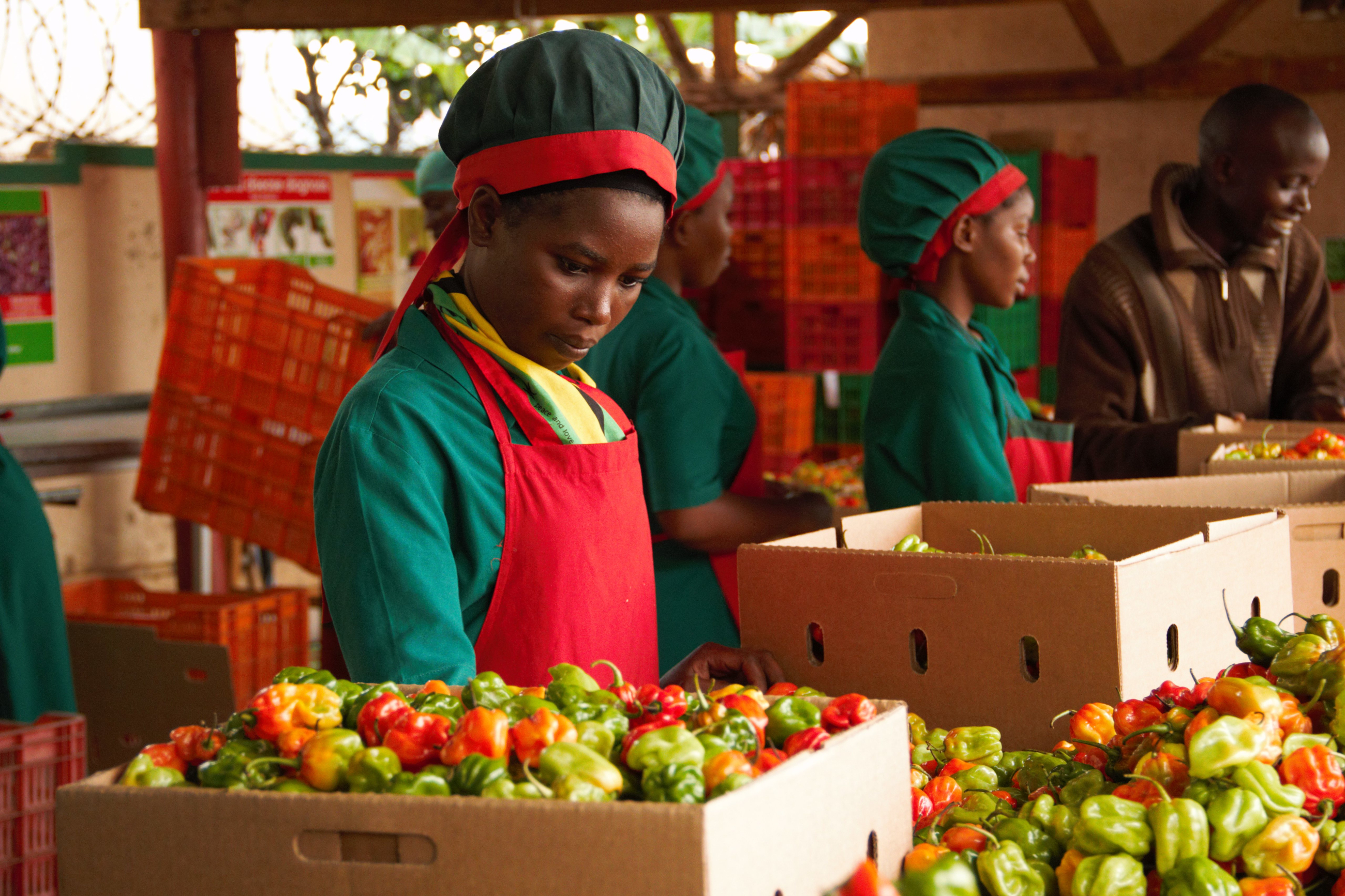
The project aimed to improve market access to the EU and other high-end regional markets for Ugandan fresh fruit and vegetables. By improving inspections and certifying produce exports, the project reduced the number of interceptions of produce to the EU, leading to increased revenue for stakeholders across the value chain. Sustained income to fruit and vegetable producers and their employees will contribute to economic growth, poverty reduction and food security in line with Uganda's development policy.
Uganda's economy is driven by its agriculture sector, which employs approximately 84% of its working population. In 2014, the EU intercepted more than 80% of fresh fruit and vegetable exports from Uganda because they contained harmful organisms, including false codling moth and fruit flies, in capsicum and bitter gourd. Exports to the EU amount to 60% of all fresh fruit and vegetable exports, making it the country's most important market.
The interceptions were mainly a result of weak institutional coordination and enforcement mechanisms; inadequate production, processing and distribution infrastructure; low public awareness; limited conformity assessment services; limited skilled human resources; inadequate regulatory infrastructure (laboratories, quarantine facilities, laboratory services); and inadequate capacity for the involvement of small-scale producers in the private sector.
To address these challenges, Uganda instituted various strategies and policies to improve agricultural production, enhance SPS capacity and expand exports. An example of this is Uganda's Vision 2040, a strategy that identifies agriculture as one of the key opportunities to strengthen the economy and transform society.
This project built on lessons from earlier projects (e.g. STDF/PG/335) and identified synergies with relevant ongoing initiatives.
Read project story here.
Established an SPS multi-stakeholder platform and apex association
- The project successfully promoted public-private collaboration by establishing an SPS multi-stakeholder platform to connect government authorities, horticulture producers and industry associations. By the time the project concluded, more than 168 stakeholders were using the platform, which has become a hub for information-sharing and joint learning.
- The formation of HortiFresh, an apex industry association, will enable small producer and exporter groups to improve collaboration and communication with the Department of Crop Inspection and Certification.
Strengthened phytosanitary capacity
- Stakeholder capacity was built in line with a systems approach to meet EU SPS export requirements. Producers were trained in good agricultural practices, integrated pest management, and methods of producing chilies. This was informed by a capsicum dossier that was developed with the support of COLEAD.
- Technical reference materials, including standard operating procedures, were produced for inspecting and monitoring five priority fresh fruit and vegetable quarantine pests.
- More than 1,400 stakeholders – including producers and government staff – were trained in pest and disease management, food safety and SPS export requirements.
- NPPO staff were issued with personal protective equipment.
Streamlined inspection and export certification system
- To speed up processes and improve accuracy and transparency, 25 plant health inspectors received tablets and computers to process electronic phytosanitary certificates (e-Phyto solutions). As a result, the percentage of incorrect or incomplete documents submitted for certification during the project decreased by 66%.
- Efficiencies derived from digitization resulted in streamlined and transparent processes, enabling an increase in the number of exporters accredited from 67 in 2017 to 150 in 2022.
Established phytosanitary survey and monitoring systems in the fruit and vegetable value chain based on public-private partnership
- A training curriculum for five priority pests – Thaumatotibia leucotreta (false codling moth), potato virus Y(PVY), Dacus spp, Bactrocera spp and fruit flies was established.
- Five standard operating procedures for specific survey and monitoring systems of the priority pests were developed and 50 people trained to implement system. Participants representing the Department of Crop Inspection and Certification, producer and exporter associations, scouts from production entities, district extension staff, and crop protection and production departments received training.
Improved awareness and support at the national level
- The project raised the awareness of inspection and certification requirements and procedures among stakeholders in the fresh fruit and vegetable export sector. Communication with senior government officials and executives of exporter and producer associations was sustained through targeted briefing sessions.
- An SPS communications strategy was developed and used to guide stakeholder communication.
- Detailed technical briefs and communication materials covering capsicum, garden eggs and bitter gourd were produced along general agricultural practices, pest and disease management, and the certification process.
Reduced interceptions and additional funding sourced for the fruits and vegetable sector
- Capsicum interceptions decreased by more than 90%, from 72 in 2018 to three in 2022. These positive results catalysed an additional EUR8 million in EU investment to build capacity in Uganda's fresh fruit and vegetable sector.
Strong national ownership and good collaboration among government authorities and the private sector, combined with foresight and a flexible approach, enabled the project to respond to new SPS issues affecting horticulture trade, and leverage additional resources to strengthen the sector.
Learning about experiences in neighboring countries provided inspiration for Ugandan stakeholders to adopt new approaches. This has improved the governance and policy framework for the horticulture sector and created an enabling trade environment for the private sector.
The development of a robust public-private partnership improved dialogue, built trust and created a shared vision for the future of the horticulture sector in Uganda.
In the private sector, a strong apex industry association enabled its members to benefit from economies of scale and increase their voice at the national level.
In government, the creation of an inter-ministerial task force brought together different horticulture-focused committees. This supports improved collaboration, negotiations, advocacy and coordination on SPS matters.